
Mobile Device Exploitation Cookbook
¥71.93
Over 40 recipes to master mobile device penetration testing with open source tools About This Book Learn application exploitation for popular mobile platforms Improve the current security level for mobile platforms and applications Discover tricks of the trade with the help of code snippets and screenshots Who This Book Is For This book is intended for mobile security enthusiasts and penetration testers who wish to secure mobile devices to prevent attacks and discover vulnerabilities to protect devices. What You Will Learn Install and configure Android SDK and ADB Analyze Android Permission Model using ADB and bypass Android Lock Screen Protection Set up the iOS Development Environment - Xcode and iOS Simulator Create a Simple Android app and iOS app and run it in Emulator and Simulator respectively Set up the Android and iOS Pentesting Environment Explore mobile malware, reverse engineering, and code your own malware Audit Android and iOS apps using static and dynamic analysis Examine iOS App Data storage and Keychain security vulnerabilities Set up the Wireless Pentesting Lab for Mobile Devices Configure traffic interception with Android and intercept Traffic using Burp Suite and Wireshark Attack mobile applications by playing around with traffic and SSL certificates Set up the Blackberry and Windows Phone Development Environment and Simulator Setting up the Blackberry and Windows Phone Pentesting Environment Steal data from Blackberry and Windows phones applications In Detail Mobile attacks are on the rise. We are adapting ourselves to new and improved smartphones, gadgets, and their accessories, and with this network of smart things, come bigger risks. Threat exposure increases and the possibility of data losses increase. Exploitations of mobile devices are significant sources of such attacks. Mobile devices come with different platforms, such as Android and iOS. Each platform has its own feature-set, programming language, and a different set of tools. This means that each platform has different exploitation tricks, different malware, and requires a unique approach in regards to forensics or penetration testing. Device exploitation is a broad subject which is widely discussed, equally explored by both Whitehats and Blackhats. This cookbook recipes take you through a wide variety of exploitation techniques across popular mobile platforms. The journey starts with an introduction to basic exploits on mobile platforms and reverse engineering for Android and iOS platforms. Setup and use Android and iOS SDKs and the Pentesting environment. Understand more about basic malware attacks and learn how the malware are coded. Further, perform security testing of Android and iOS applications and audit mobile applications via static and dynamic analysis. Moving further, you'll get introduced to mobile device forensics. Attack mobile application traffic and overcome SSL, before moving on to penetration testing and exploitation. The book concludes with the basics of platforms and exploit tricks on BlackBerry and Windows Phone. By the end of the book, you will be able to use variety of exploitation techniques across popular mobile platforms with stress on Android and iOS. Style and approach This is a hands-on recipe guide that walks you through different aspects of mobile device exploitation and securing your mobile devices against vulnerabilities. Recipes are packed with useful code snippets and screenshots.
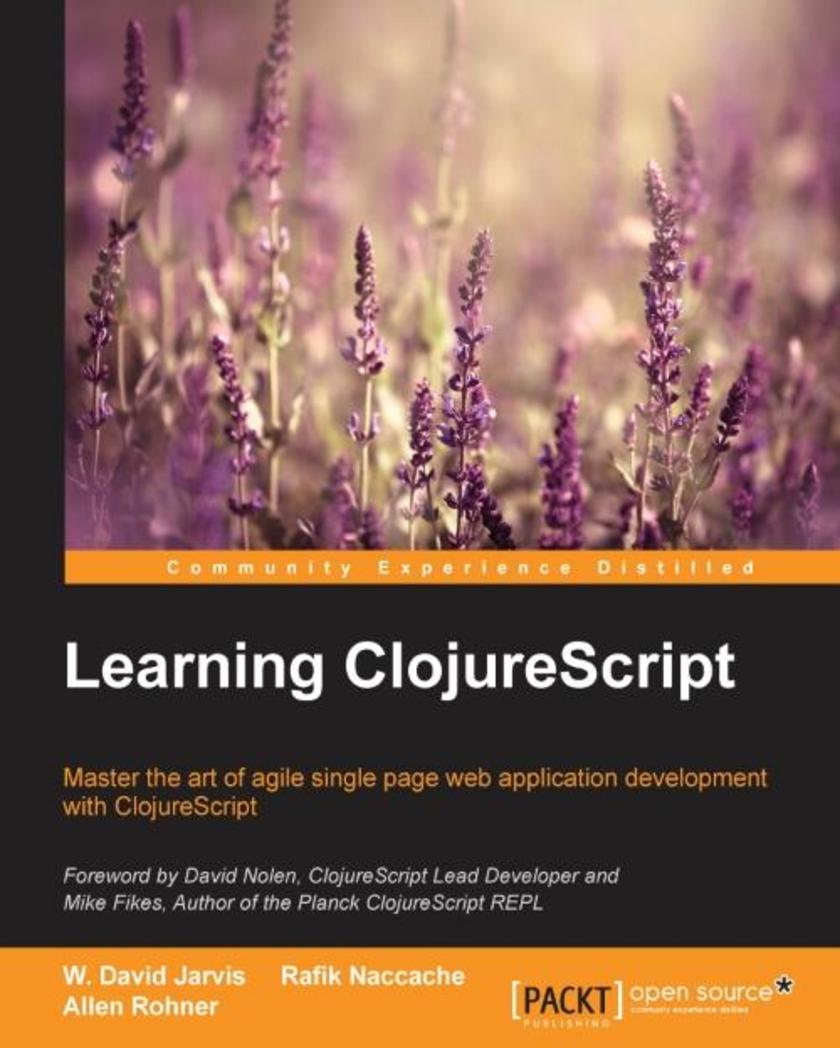
Learning ClojureScript
¥71.93
Master the art of agile single page web application development with ClojureScript About This Book Set up interactive development workflows for the browser or Node.js thanks to the ClojureScript ecosystem Learn the basics of interactive single page web app development taking advantage of the functional nature of ClojureScript Delve into advanced rich web application development concepts such as Om, along with core.async, using zippers and logic programming, and preparing code for production with testing or optimizing via the Google Closure Compiler Who This Book Is For This book is for web application developers who want to benefit from the power of ClojureScript to get an agile and highly productive development platform that targets mainly browser JavaScript. You are not required to be fluent in Clojure, but it will be easier for you if you have a basic understanding of browser and server-side JavaScript. What You Will Learn Understand how the ClojureScript compiler operates Set up interactive development workflows for ClojureScript Grasp the basics of the ClojureScript language, including basic syntax, data structures, variable scoping, namespaces, and finally the powerful sequence abstraction Delve into advanced concepts such as functional programming, macro writing, asynchronous programming, app routing, and real-time web Develop simple one page web applications Explore techniques to make your web apps aware of the external world through external or embedded database access or Oauth 2 integration Learn more advanced ClojureScript concepts like in app routing, real-time web Prepare your work for production, getting insights into optional type-checking, writing portable Clojure/ClojureScript code, and testing In Detail Clojure is an expressive language that makes it possible to easily tackle complex software development challenges. Its bias toward interactive development has made it a powerful tool, enabling high developer productivity. In this book, you will first learn how to construct an interactive development experience for ClojureScript.. You will be guided through ClojureScript language concepts, looking at the basics first, then being introduced to advanced concepts such as functional programming or macro writing. After that, we elaborate on the subject of single page web applications, showcasing how to build a simple one, then covering different possible enhancements. We move on to study more advanced ClojureScript concepts, where you will be shown how to address some complex algorithmic cases. Finally, you'll learn about optional type-checking for your programs, how you can write portable code, test it, and put the advanced compilation mode of the Google Closure Compiler to good use. Style and approach This book is a comprehensive reference guide on ClojureScript development for the front end, and will gradually help you master interactive ClojureScript development workflows, through detailed step-by-step information illustrated with annotated code samples.
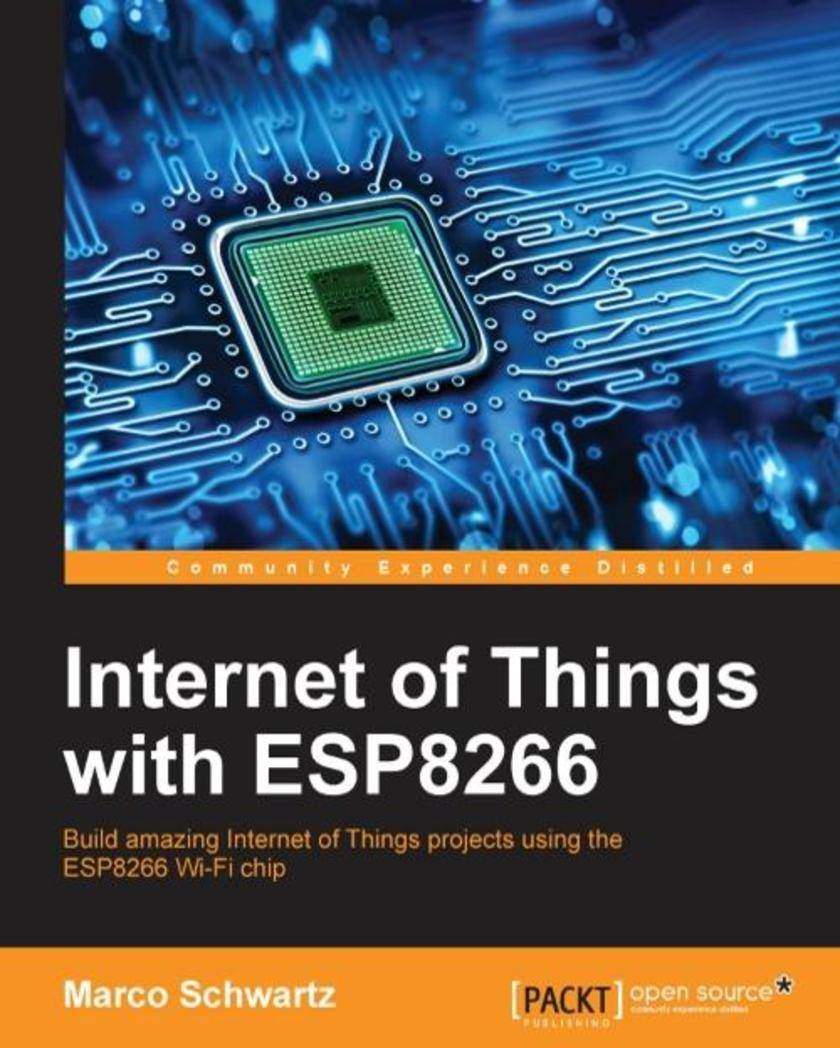
Internet of Things with ESP8266
¥71.93
Build amazing Internet of Things projects using the ESP8266 Wi-Fi chip About This Book Get to know the powerful and low cost ESP8266 and build interesting projects in the field of Internet of Things Configure your ESP8266 to the cloud and explore the networkable modules that will be utilized in the IoT projects This step-by-step guide teaches you the basics of IoT with ESP8266 and makes your life easier Who This Book Is For This book is for those who want to build powerful and inexpensive IoT projects using the ESP8266 WiFi chip, including those who are new to IoT, or those who already have experience with other platforms such as Arduino. What You Will Learn Control various devices from the cloud Interact with web services, such as Twitter or Facebook Make two ESP8266 boards communicate with each other via the cloud Send notifications to users of the ESP8266, via email, text message, or push notifications Build a physical device that indicates the current price of Bitcoin Build a simple home automation system that can be controlled from the cloud Create your own cloud platform to control ESP8266 devices In Detail The Internet of Things (IoT) is the network of objects such as physical things embedded with electronics, software, sensors, and connectivity, enabling data exchange. ESP8266 is a low cost WiFi microcontroller chip that has the ability to empower IoT and helps the exchange of information among various connected objects. ESP8266 consists of networkable microcontroller modules, and with this low cost chip, IoT is booming. This book will help deepen your knowledge of the ESP8266 WiFi chip platform and get you building exciting projects. Kick-starting with an introduction to the ESP8266 chip, we will demonstrate how to build a simple LED using the ESP8266. You will then learn how to read, send, and monitor data from the cloud. Next, you’ll see how to control your devices remotely from anywhere in the world. Furthermore, you’ll get to know how to use the ESP8266 to interact with web services such as Twitter and Facebook. In order to make several ESP8266s interact and exchange data without the need for human intervention, you will be introduced to the concept of machine-to-machine communication. The latter part of the book focuses more on projects, including a door lock controlled from the cloud, building a physical Bitcoin ticker, and doing wireless gardening. You’ll learn how to build a cloud-based ESP8266 home automation system and a cloud-controlled ESP8266 robot. Finally, you’ll discover how to build your own cloud platform to control ESP8266 devices. With this book, you will be able to create and program Internet of Things projects using the ESP8266 WiFi chip. Style and approach This is a step-by-step guide that provides great IOT projects with ESP8266. All the key concepts are explained details with the help of examples and demonstrations of the projects.
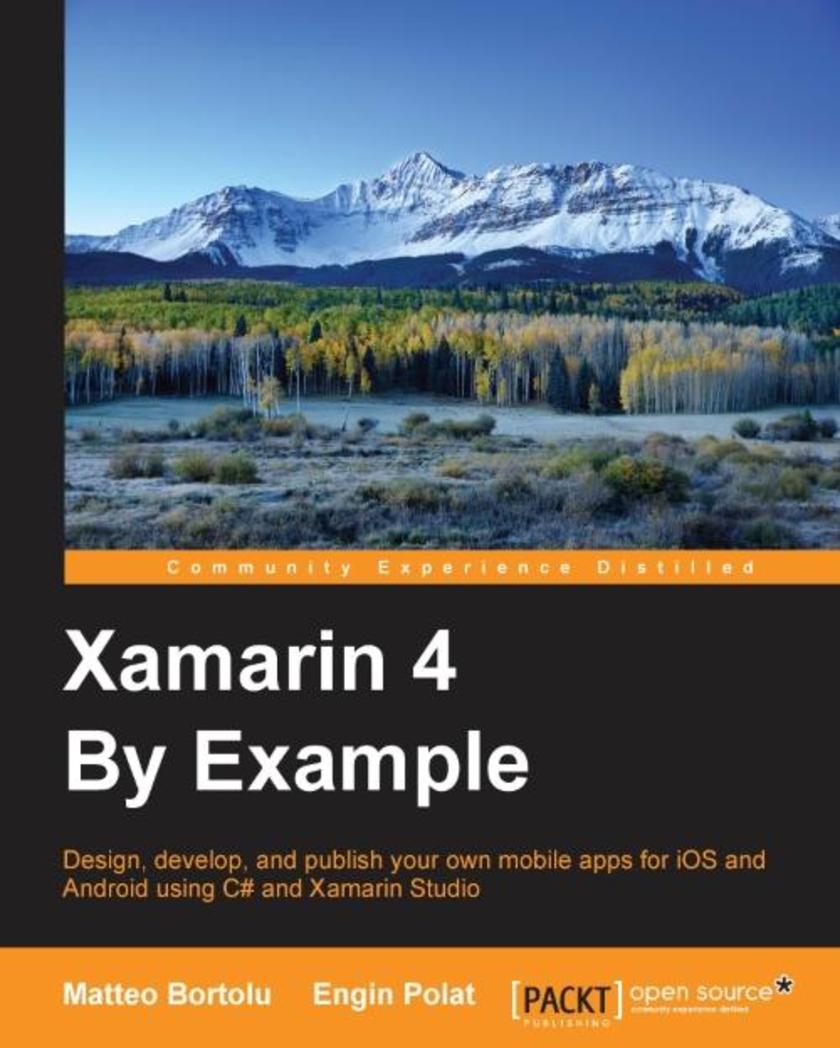
Xamarin 4 By Example
¥71.93
Design, develop, and publish your own mobile apps for iOS and Android using C# and Xamarin Studio About This Book Explore the exciting features of Xamarin Studio while learning to develop your own applications Develop a complete application from conceptualization through to publishing it on the app store The book walks you through the basics of cross-platform development with Xamarin using examples and best practices and tips for cross platform solutions. Who This Book Is For If you want to develop your own applications and want to explore the features of Xamarin Studio, then this is the book for you. It is expected that you have a basic understanding of technologies in mobile development, but prior knowledge of Xamarin is not required. What You Will Learn Understand the software development lifecycle for mobile applications Use Xamarin Studio and its wide range of features to write your programs in C# Use different options to create multi-platform applications using Xamarin and develop a cross-platform extension method Work with Xamarin forms and various UI controls Integrate synchronous and asynchronous communication module within your app Render images to work with Android and iOS Link a third-party application to your solution In Detail The mobile app market is increasing exponentially every year. Xamarin Studio with its modern and powerful IDEs makes creating applications a lot easier by simplifying the development process. Xamarin will allow you and your team to create native applications by taking advantage of one of the most evolved programming language in the world: C#. This book will provide you with the basic skills you need to start developing mobile apps using C# and Xamarin. By working through the examples in each chapter, you will gain hands-on experience of creating a complete app that is fully functional by all means. Finally, you will learn to publish the app you created on the app market. Each project in this book will take you one step closer to becoming a professional app developer. Style and approach The step-by-guide will walk you through the process of creating an application of with the help of small projects that will teach you everything you need to know to build a complete application of your own.
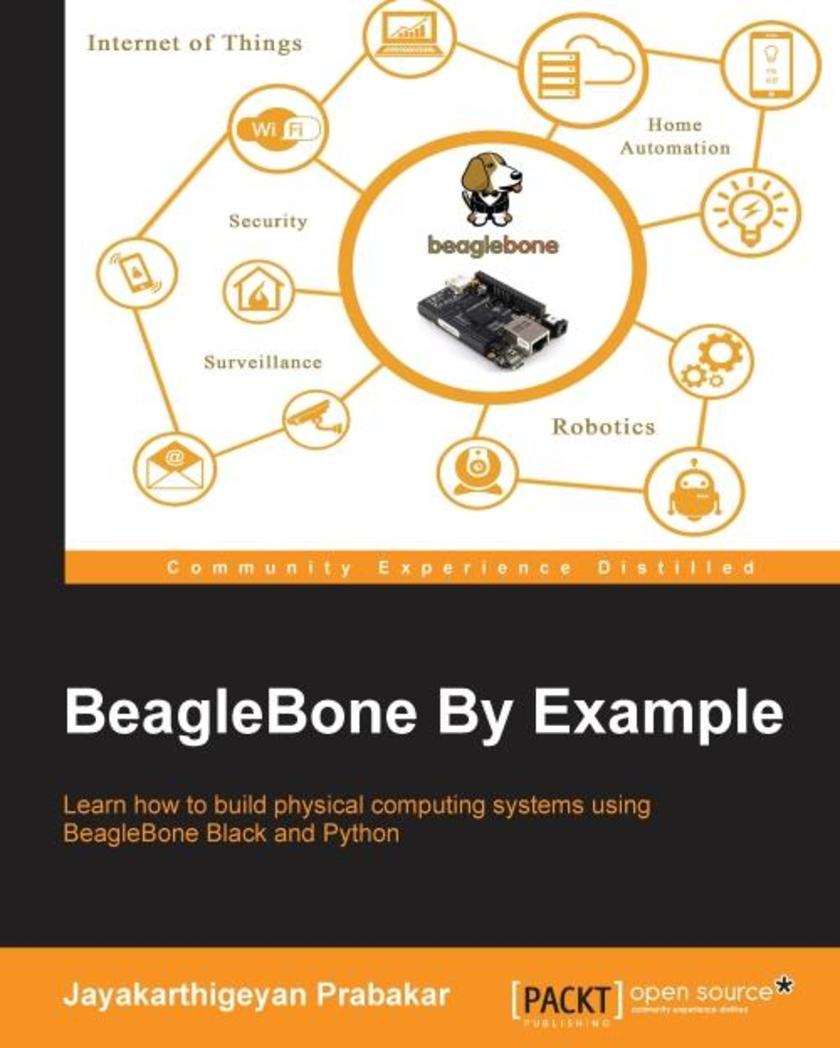
BeagleBone By Example
¥71.93
Learn how to build physical computing systems using BeagleBone Black and Python About This Book Get to grips with the fundamentals of BeagleBone Leverage Python *s to program BeagleBone for your requirements Build four exciting projects, from home automation to a tele-controlled robot Who This Book Is For This book is intended for hobbyists and consumers who wish to create impressive projects using BeagleBone. You must be familiar with Python programming. What You Will Learn Program on BeagleBone Black using Python Interface sensors and actuators to BeagleBone Black Build your own real-time physical computing systems Connect physical computing systems to cloud servers Build your own home automation and home security system Build your own tele-controlled robot with real-time video streaming In Detail BeagleBone is a low cost, community-supported development platform to develop a variety of electronic projects. This book will introduce you to BeagleBone and get you building fun, cool, and innovative projects with it. Start with the specifications of BeagleBone Black and its operating systems, then get to grips with the GPIOs available in BeagleBone Black. Work through four types of exciting projects: building real-time physical computing systems, home automation, image processing for a security system, and building your own tele-controlled robot and learn the fundamentals of a variety of projects in a single book. By the end of this book, you will be able to write code for BeagleBone in order to operate hardware and impart decision-making capabilities with the help of efficient coding in Python. Style and approach This book is a step by step guide that will walk you through the fundamentals of building different projects using BeagleBone Black.
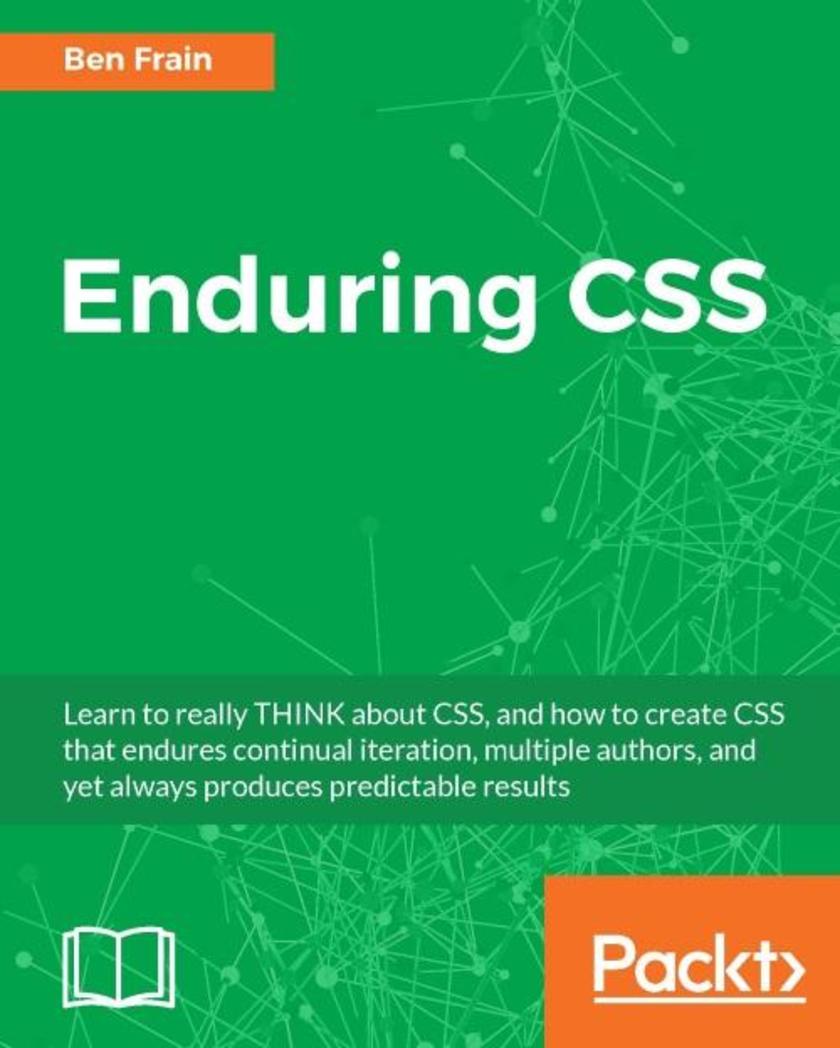
Enduring CSS
¥71.93
Learn to really THINK about CSS, and how to create CSS that endures continual iteration, multiple authors, and yet always produces predictable results About This Book Address the problems of CSS at scale, avoiding the shortfalls of scaling CSS. The shortfalls of conventional approaches to scaling CSS. Develop consistent and enforceable selector naming conventions with ECSS. Learn how to organize project structure to more easily isolate and decouple visual components. Who This Book Is For This is a book for working CSS authors involved in large projects. This is a book that tackles create enduring CSS for large-scale projects. What You Will Learn The problems of CSS at scale—specificity, the cascade and styles intrinsically tied to element structure. The shortfalls of conventional approaches to scaling CSS. The ECSS methodology and the problems it solves. How to develop consistent and enforceable selector naming conventions with ECSS. How to organise project structure to more easily isolate and decouple visual components. How to handle state changes in the DOM with ARIA or override selectors. How to apply ECSS to web applications and visual modules. Considerations of CSS tooling and processing: Sass/PostCSS and linting. Addressing the notion of CSS selector speed with hard data and browser representative insight In Detail Learn with me, Ben Frain, about how to really THINK about CSS and how to use CSS for any size project! I'll show you how to write CSS that endures continual iteration, multiple authors, and yet always produces predictable results. Enduring CSS, often referred to as ECSS, offers you a robust and proven approach to authoring and maintaining style sheets at scale. Enduring CSS is not a book about writing CSS, as in the stuff inside the curly braces. This is a book showing you how to think about CSS, and be a smarter developer with that thinking! It's about the organisation and architecture of CSS—the parts outside the braces. I will help you think about the aspects of CSS development that become the most difficult part of writing CSS in larger projects. You’ll learn about the problems of authoring CSS at scale—including specificity, the cascade and styles intrinsically tied to document structure. I'll introduce you to the ECSS methodology, and show you how to develop consistent and enforceable selector naming conventions. We'll cover how to apply ECSS to your web applications and visual model, and how you can organize your project structure wisely, and handle visual state changes with ARIA, providing greater accessibility considerations. In addition, we'll take a deep look into CSS tooling and process considerations. Finally we will address performance considerations by examining topics such as CSS selector speed with hard data and browser-representative insight. Style and approach Learn with me, Ben Frain, about how to really think about CSS. This is a book to deal with writing CSS for large-scale, rapidly changing web projects and applications. This isn't a book about writing CSS, as in the stuff inside the curly braces - this is a book about the organisation and architecture of CSS; the parts outside the braces!
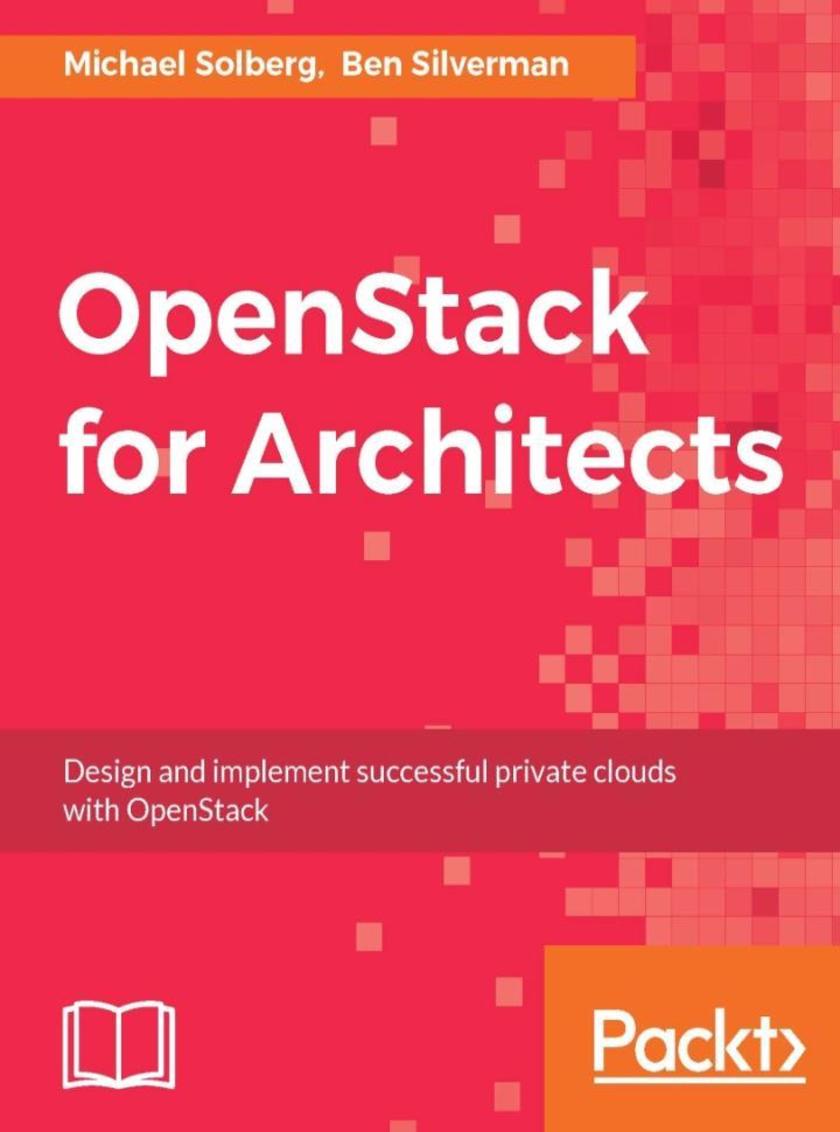
OpenStack for Architects
¥71.93
Design and implement successful private clouds with OpenStack About This Book Explore the various design choices available for cloud architects within an OpenStack deployment Craft an OpenStack architecture and deployment pipeline to meet the unique needs of your organization Create a product roadmap for Infrastructure as a Service in your organization using this hands-on guide Who This Book Is For This book is written especially for those who will design OpenStack clouds and lead their implementation. These people are typically cloud architects, but may also be in product management, systems engineering, or enterprise architecture. What You Will Learn Familiarize yourself with the components of OpenStack Build an increasingly complex OpenStack lab deployment Write compelling documentation for the architecture teams within your organization Apply Agile configuration management techniques to deploy OpenStack Integrate OpenStack with your organization's identity management, provisioning, and billing systems Configure a robust virtual environment for users to interact with Use enterprise security guidelines for your OpenStack deployment Create a product roadmap that delivers functionality quickly to the users of your platform In Detail Over the last five years, hundreds of organizations have successfully implemented Infrastructure as a Service (IaaS) platforms based on OpenStack. The huge amount of investment from these organizations, industry giants such as IBM and HP, as well as open source leaders such as Red Hat have led analysts to label OpenStack as the most important open source technology since the Linux operating system. Because of its ambitious scope, OpenStack is a complex and fast-evolving open source project that requires a diverse skill-set to design and implement it. This guide leads you through each of the major decision points that you'll face while architecting an OpenStack private cloud for your organization. At each point, we offer you advice based on the experience we've gained from designing and leading successful OpenStack projects in a wide range of industries. Each chapter also includes lab material that gives you a chance to install and configure the technologies used to build production-quality OpenStack clouds. Most importantly, we focus on ensuring that your OpenStack project meets the needs of your organization, which will guarantee a successful rollout. Style and approach This is practical, hands-on guide to implementing OpenStack clouds, where each topic is illustrated with real-world examples and then the technical points are proven in the lab.
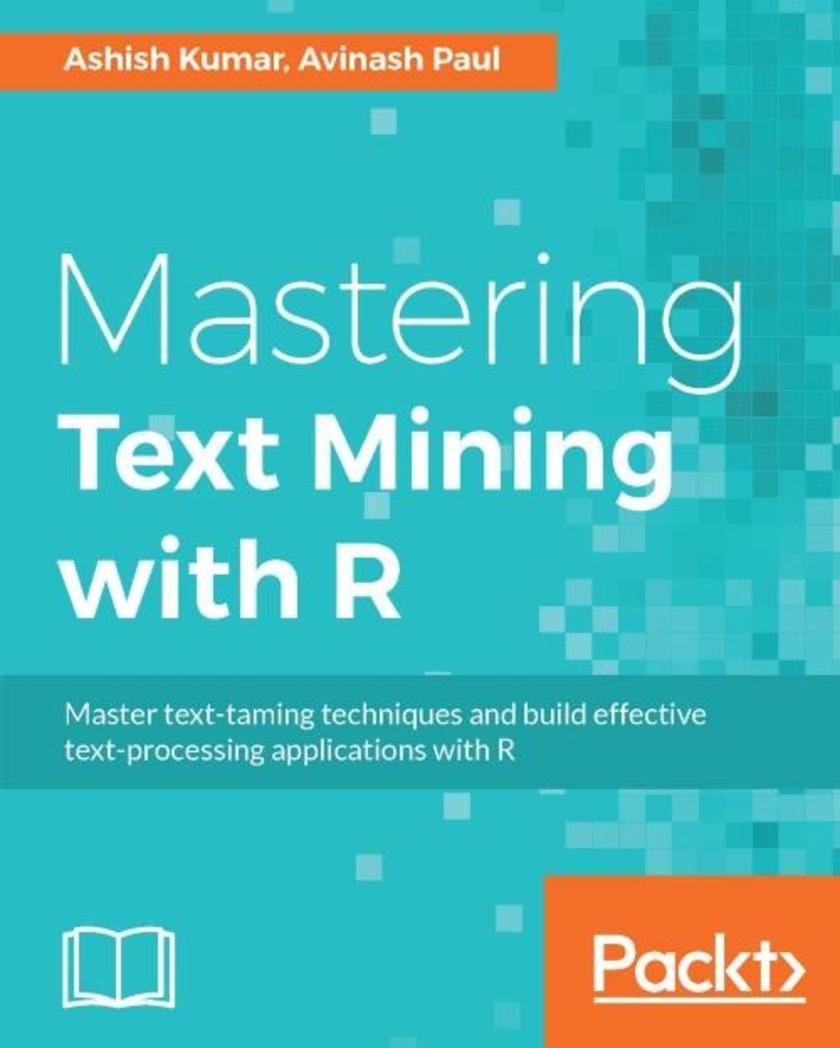
Mastering Text Mining with R
¥71.93
Master text-taming techniques and build effective text-processing applications with R About This Book Develop all the relevant skills for building text-mining apps with R with this easy-to-follow guide Gain in-depth understanding of the text mining process with lucid implementation in the R language Example-rich guide that lets you gain high-quality information from text data Who This Book Is For If you are an R programmer, analyst, or data scientist who wants to gain experience in performing text data mining and analytics with R, then this book is for you. Exposure to working with statistical methods and language processing would be helpful. What You Will Learn Get acquainted with some of the highly efficient R packages such as OpenNLP and RWeka to perform various steps in the text mining process Access and manipulate data from different sources such as JSON and HTTP Process text using regular expressions Get to know the different approaches of tagging texts, such as POS tagging, to get started with text analysis Explore different dimensionality reduction techniques, such as Principal Component Analysis (PCA), and understand its implementation in R Discover the underlying themes or topics that are present in an unstructured collection of documents, using common topic models such as Latent Dirichlet Allocation (LDA) Build a baseline sentence completing application Perform entity extraction and named entity recognition using R In Detail Text Mining (or text data mining or text analytics) is the process of extracting useful and high-quality information from text by devising patterns and trends. R provides an extensive ecosystem to mine text through its many frameworks and packages. Starting with basic information about the statistics concepts used in text mining, this book will teach you how to access, cleanse, and process text using the R language and will equip you with the tools and the associated knowledge about different tagging, chunking, and entailment approaches and their usage in natural language processing. Moving on, this book will teach you different dimensionality reduction techniques and their implementation in R. Next, we will cover pattern recognition in text data utilizing classification mechanisms, perform entity recognition, and develop an ontology learning framework. By the end of the book, you will develop a practical application from the concepts learned, and will understand how text mining can be leveraged to analyze the massively available data on social media. Style and approach This book takes a hands-on, example-driven approach to the text mining process with lucid implementation in R.
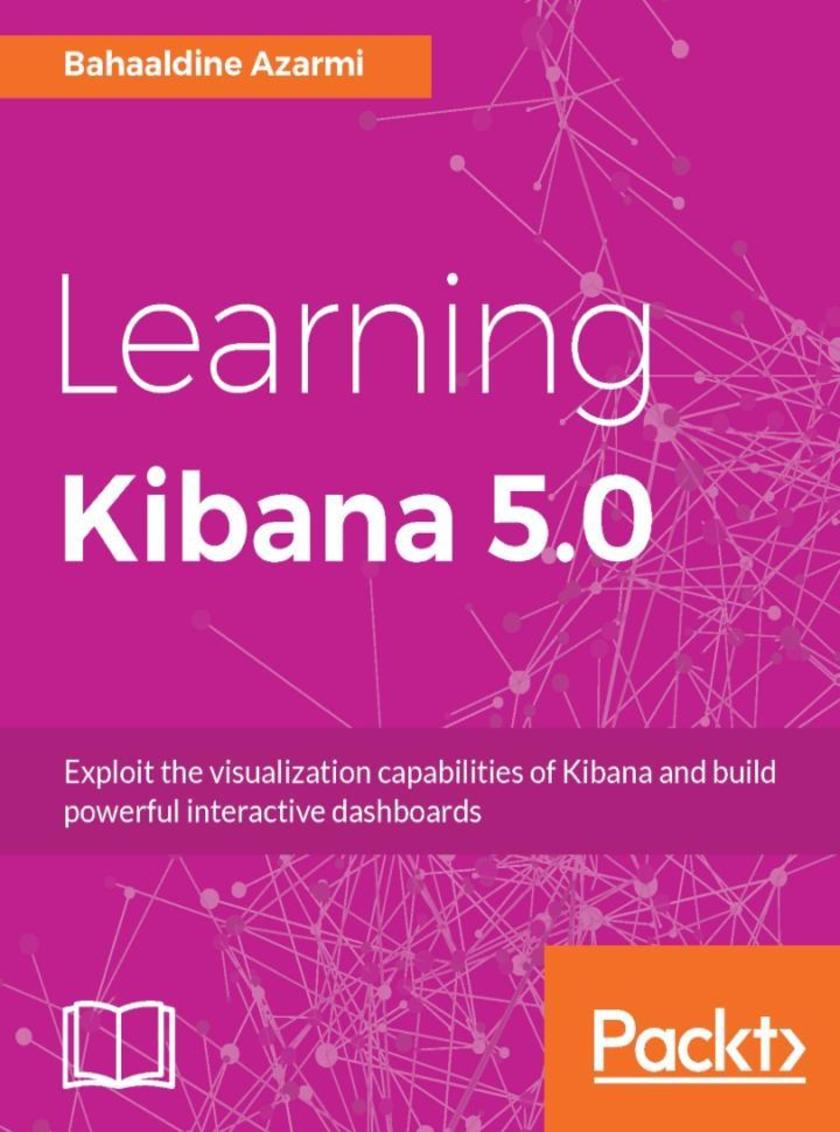
Learning Kibana 5.0
¥71.93
Exploit the visualization capabilities of Kibana and build powerful interactive dashboards About This Book Introduction to data-driven architecture and the Elastic stack Build effective dashboards for data visualization and explore datasets with Elastic Graph A comprehensive guide to learning scalable data visualization techniques in Kibana Who This Book Is For If you are a developer, data visualization engineer, or data scientist who wants to get the best of data visualization at scale then this book is perfect for you. A basic understanding of Elasticsearch and Logstash is required to make the best use of this book. What You Will Learn How to create visualizations in Kibana Ingest log data, structure an Elasticsearch cluster, and create visualization assets in Kibana Embed Kibana visualization on web pages Scaffold, develop, and deploy new Kibana & Timelion customizations Build a metrics dashboard in Timelion based on time series data Use the Graph plugin visualization feature and leverage a graph query Create, implement, package, and deploy a new custom plugin Use Prelert to solve anomaly detection challenges In Detail Kibana is an open source data visualization platform that allows you to interact with your data through stunning, powerful graphics. Its simple, browser-based interface enables you to quickly create and share dynamic dashboards that display changes to Elasticsearch queries in real time. In this book, you’ll learn how to use the Elastic stack on top of a data architecture to visualize data in real time. All data architectures have different requirements and expectations when it comes to visualizing the data, whether it’s logging analytics, metrics, business analytics, graph analytics, or scaling them as per your business requirements. This book will help you master Elastic visualization tools and adapt them to the requirements of your project. You will start by learning how to use the basic visualization features of Kibana 5. Then you will be shown how to implement a pure metric analytics architecture and visualize it using Timelion, a very recent and trendy feature of the Elastic stack. You will learn how to correlate data using the brand-new Graph visualization and build relationships between documents. Finally, you will be familiarized with the setup of a Kibana development environment so that you can build a custom Kibana plugin. By the end of this book you will have all the information needed to take your Elastic stack skills to a new level of data visualization. Style and approach This book takes a comprehensive, step-by-step approach to working with the visualization aspects of the Elastic stack. Every concept is presented in a very easy-to-follow manner that shows you both the logic and method of implementation. Real world cases are referenced to highlight how each of the key concepts can be put to practical use.
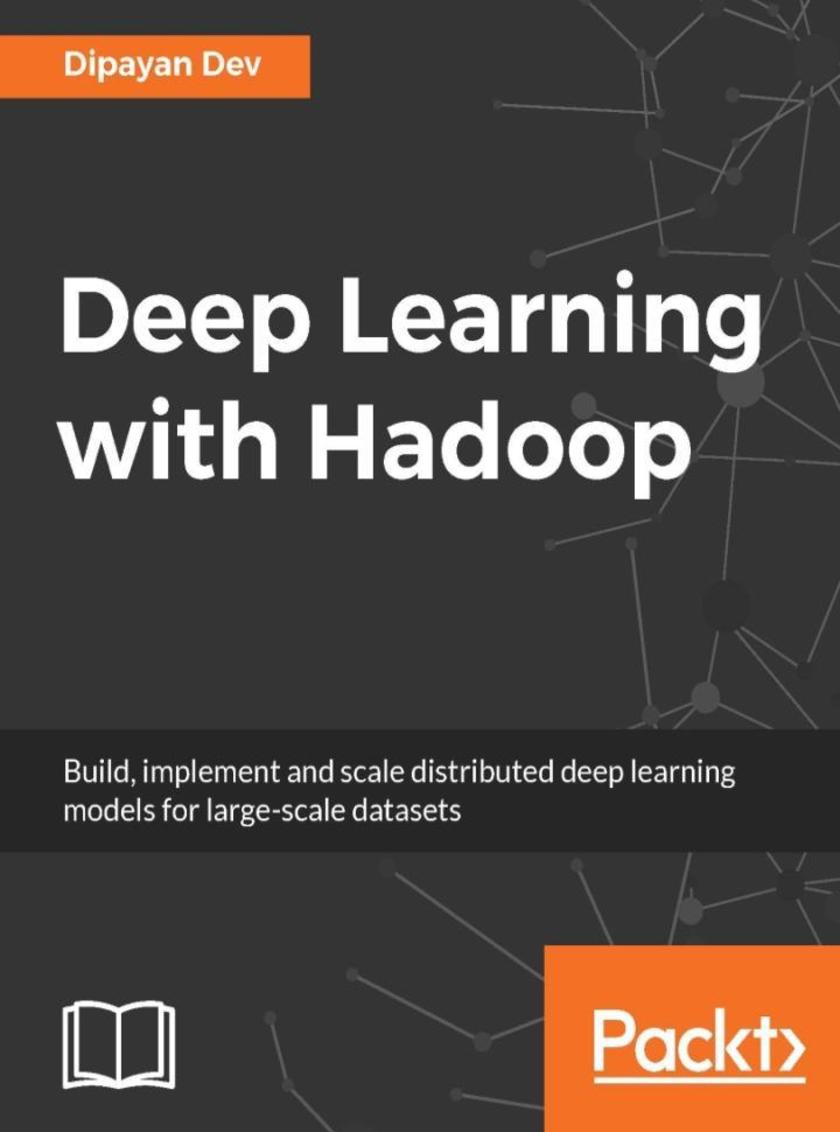
Deep Learning with Hadoop
¥71.93
Build, implement and scale distributed deep learning models for large-scale datasets About This Book Get to grips with the deep learning concepts and set up Hadoop to put them to use Implement and parallelize deep learning models on Hadoop’s YARN framework A comprehensive tutorial to distributed deep learning with Hadoop Who This Book Is For If you are a data scientist who wants to learn how to perform deep learning on Hadoop, this is the book for you. Knowledge of the basic machine learning concepts and some understanding of Hadoop is required to make the best use of this book. What You Will Learn Explore Deep Learning and various models associated with it Understand the challenges of implementing distributed deep learning with Hadoop and how to overcome it Implement Convolutional Neural Network (CNN) with deeplearning4j Delve into the implementation of Restricted Boltzmann Machines (RBM) Understand the mathematical explanation for implementing Recurrent Neural Networks (RNN) Get hands on practice of deep learning and their implementation with Hadoop. In Detail This book will teach you how to deploy large-scale dataset in deep neural networks with Hadoop for optimal performance. Starting with understanding what deep learning is, and what the various models associated with deep neural networks are, this book will then show you how to set up the Hadoop environment for deep learning. In this book, you will also learn how to overcome the challenges that you face while implementing distributed deep learning with large-scale unstructured datasets. The book will also show you how you can implement and parallelize the widely used deep learning models such as Deep Belief Networks, Convolutional Neural Networks, Recurrent Neural Networks, Restricted Boltzmann Machines and autoencoder using the popular deep learning library deeplearning4j. Get in-depth mathematical explanations and visual representations to help you understand the design and implementations of Recurrent Neural network and Denoising AutoEncoders with deeplearning4j. To give you a more practical perspective, the book will also teach you the implementation of large-scale video processing, image processing and natural language processing on Hadoop. By the end of this book, you will know how to deploy various deep neural networks in distributed systems using Hadoop. Style and approach This book takes a comprehensive, step-by-step approach to implement efficient deep learning models on Hadoop. It starts from the basics and builds the readers’ knowledge as they strengthen their understanding of the concepts. Practical examples are included in every step of the way to supplement the theory.
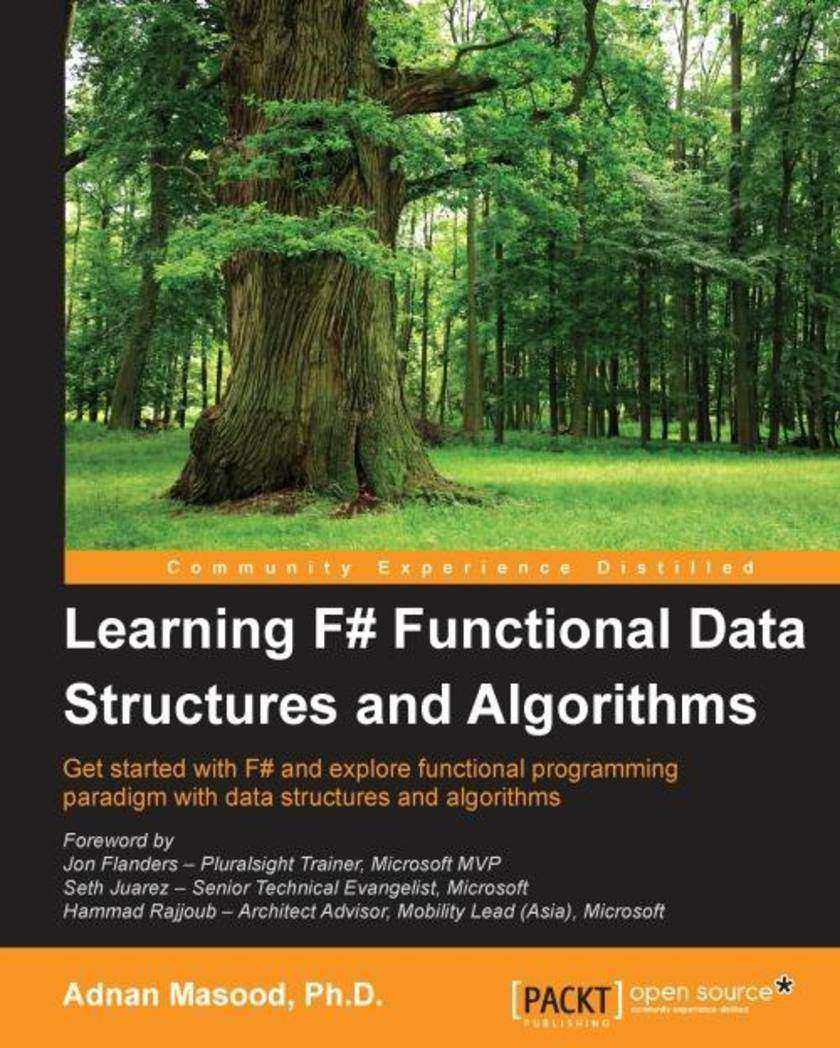
Learning F# Functional Data Structures and Algorithms
¥71.93
If you have just started your adventure with F#, then this book will help you take the right steps to become a successful F# coder. An intermediate knowledge of imperative programming concepts, and a basic understanding of the algorithms and data structures in .NET environments using the C# language and BCL (Base Class Library), would be helpful.
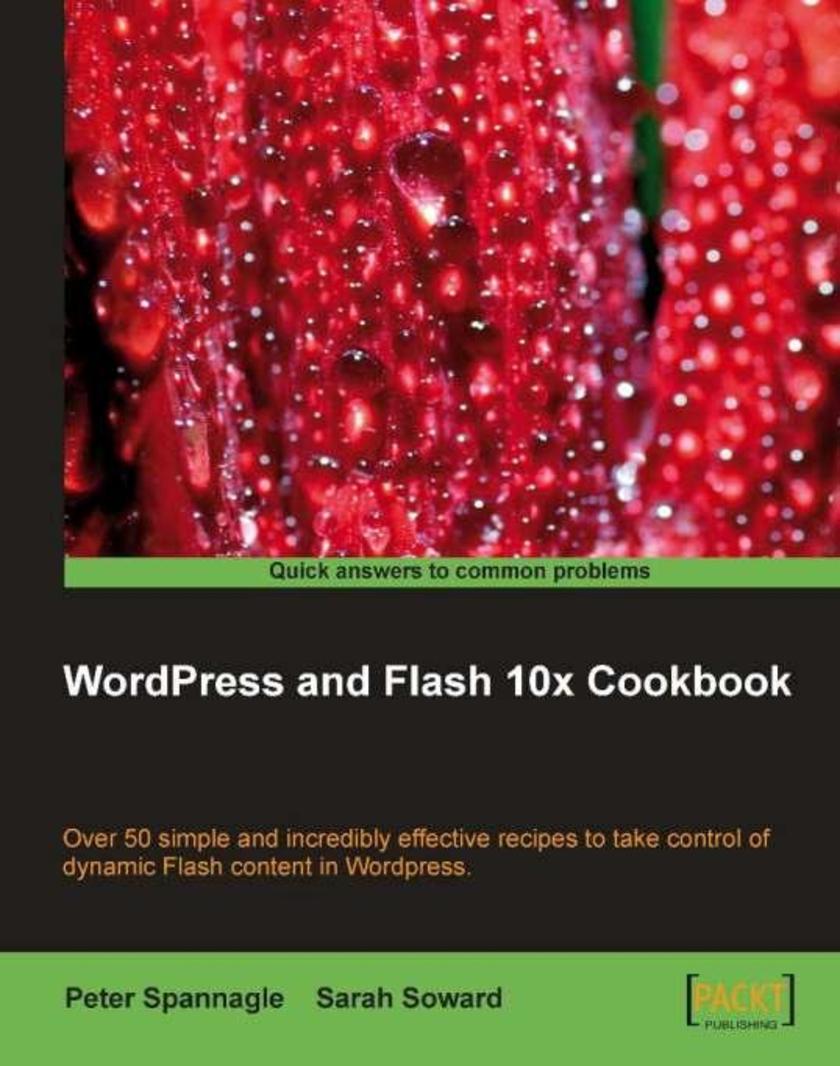
Wordpress and Flash 10x Cookbook
¥71.93
This book consists of a series of easy-to-follow recipes. Each recipe stands on its own, so you can open the book to any recipe and complete it without going through the previous recipes. You can work through the book from start to end or just choose the recipes most applicable to your needs and situation. The book presents recipes of varying difficulty levels so that there is something for everyone from a beginner to an advanced WordPress user. Detailed screenshots, code examples, and links to additional resources supplement the concise instructions. If you are a Wordpress user interested in creating multimedia-rich websites and blogs using Flash then this book is perfect for you. This book caters for site administrators and web developers, who have experience using Flash aand Wordpress.
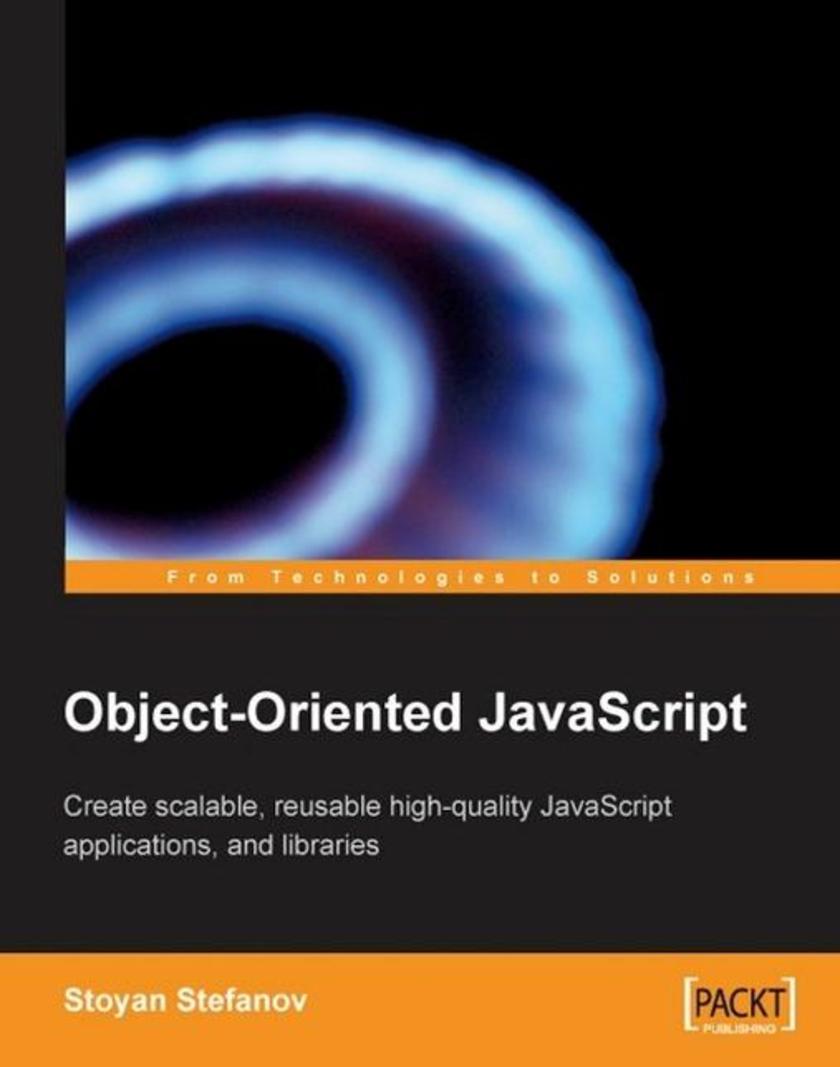
Object-Oriented JavaScript
¥71.93
The book requires no prior knowledge of JavaScript and works from the ground up to give you a thorough grounding in this powerful language. If you do already know some JavaScript, you will find plenty of eye-openers as you discover just what the language can do. This book takes a do-it-yourself approach when it comes to writing code, because the best way to really learn a programming language is by writing code. You are encouraged to type code into Firebug's console, see how it works and then tweak it and play around with it. There are practice questions at the end of each chapter to help review what you have learned.
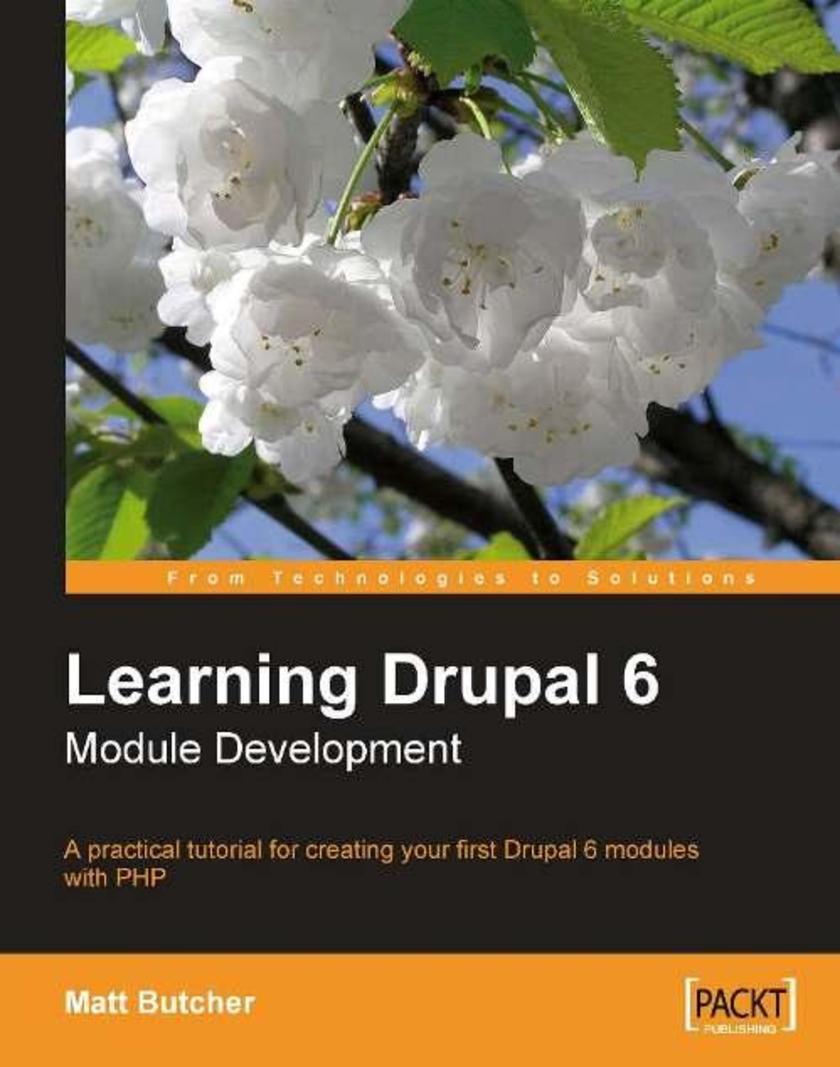
Learning Drupal 6 Module Development
¥71.93
This book is written for PHP developers who want to add custom features to Drupal. You will need to know the basics of PHP and MySQL programming, but no experience of programming Drupal is required, although you will be expected to be familiar with the basic operation of Drupal.
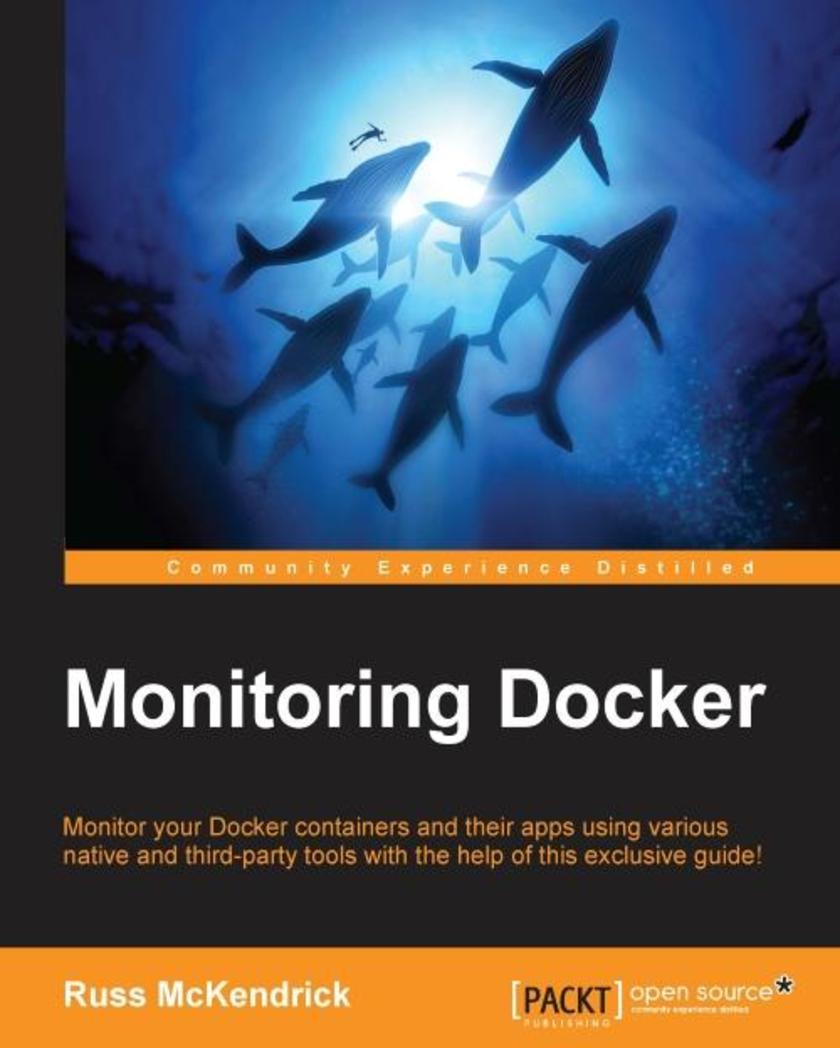
Monitoring Docker
¥71.93
Monitor your Docker containers and their apps using various native and third-party tools with the help of this exclusive guide!About This Book Get the only book that covers multiple methods to monitoring Docker Containers -your one-stop solution to all your Docker monitoring needs Learn how to implement third-party tools such as Datalog, cAdvisor, and more with this example-rich, hands-on guide Learn how to efficiently monitor Docker containers and get an edge over other administrators while maintaining apps on these containers Who This Book Is For This book is for DevOps engineers and system administrators who manage Docker containers and want to better manage these containers using expert techniques and methods and better maintain applications built on Docker. What You Will Learn Discover the tools built into Docker to gain an insight into your containers’ performance Augment Docker’s built-in tools with modern tools such as cAdvisor from Google, SysDig by Draios, and Soundcloud’s Prometheus Integrate the monitoring of your containers with more traditional monitoring solutions such as Zabbix Take advantage of the various SaaS offerings from third parties to move monitoring away from your local infrastructure and into the cloud Discover the various ways to ship your applications’ logs from the container to a central logging service Get the most out of your application and resources with the right implementation of your monitoring method In Detail This book will show you how monitoring containers and keeping a keen eye on the working of applications helps improve the overall performance of the applications that run on Docker. With the increased adoption of Docker containers, the need to monitor which containers are running, what resources they are consuming, and how these factors affect the overall performance of the system has become the need of the moment. This book covers monitoring containers using Docker's native monitoring functions, various plugins, as well as third-party tools that help in monitoring. Well start with how to obtain detailed stats for active containers, resources consumed, and container behavior. We also show you how to use these stats to improve the overall performance of the system. Next, you will learn how to use SysDig to both view your containers performance metrics in real time and record sessions to query later. By the end of this book, you will have a complete knowledge of how to implement monitoring for your containerized applications and make the most of the metrics you are collecting Style and approach This is an easy-to-follow guide with plenty of hands-on examples that can be executed both on your local machine and externally hosted services.
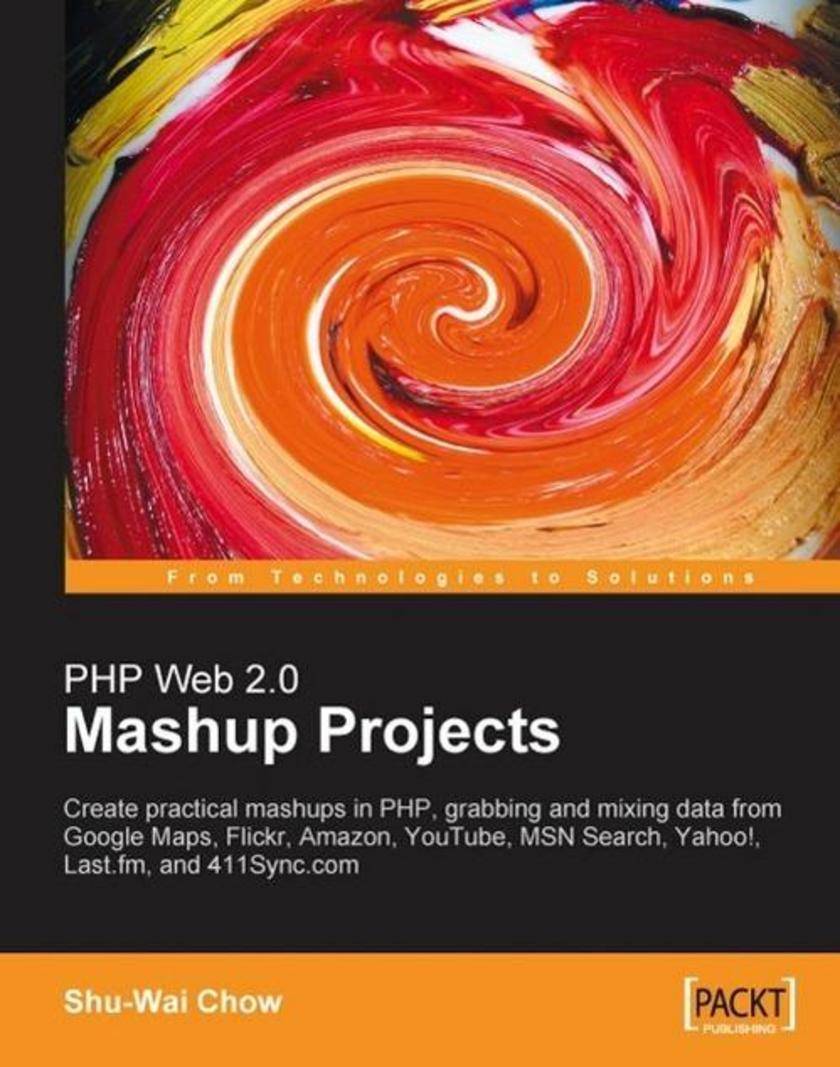
PHP Web 2.0 Mashup Projects
¥71.93
This book is a practical tutorial with five detailed and carefully explained case studies to build new and effective mashup applications. If you feel confident with your PHP programming, familiar with the basics of HTML and CSS, unafraid of XML, and interested in mashing things up, this is the book for you! There are a lot of formats and protocols, web services and web APIs encountered in this book ” you do not need to know anything about them or about AJAX; you will find all you need in the book.
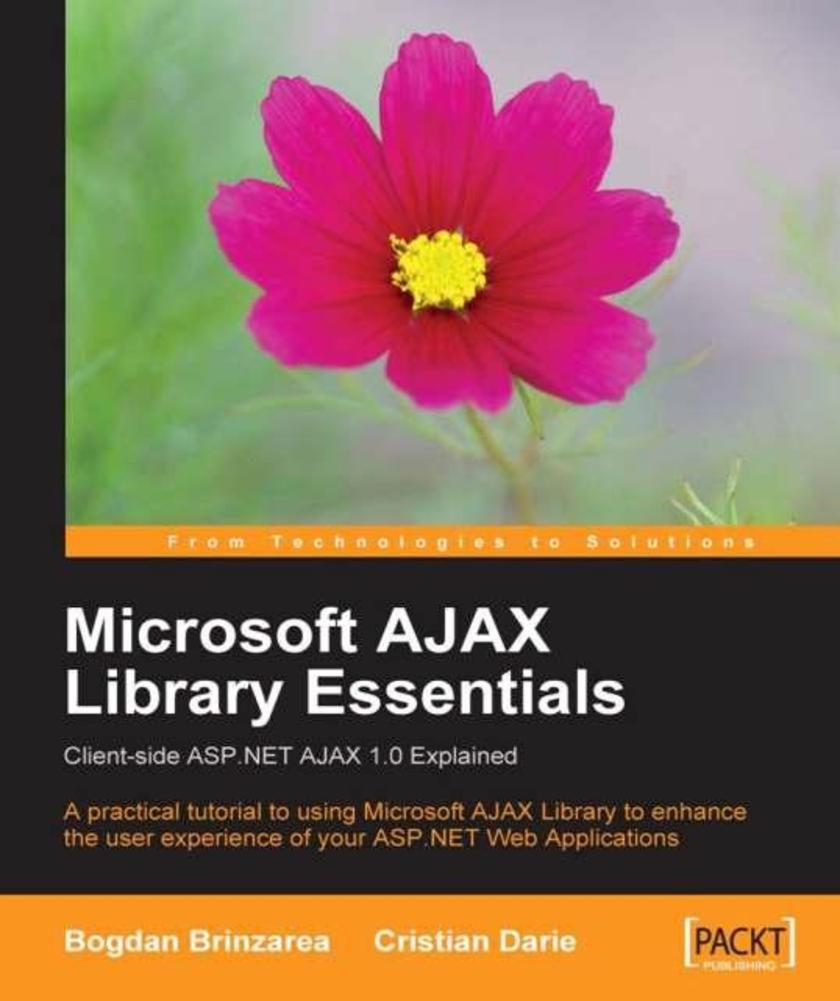
Microsoft AJAX Library Essentials: Client-side ASP.NET AJAX 1.0 Explained
¥71.93
This book is a practical tutorial to get you confident and comfortable working with the Microsoft AJAX suite. Packed with step-by-step examples and detailed explanations of how the examples work, this book is the ideal first step into the exciting world of AJAX in ASP.NET This book has been written for ASP.NET developers entering the world of the ASP.NET AJAX Framework, and for existing ASP.NET AJAX developers looking for a more detailed tutorial on the client-side of the framework: the Microsoft AJAX Library.

Building Websites with e107
¥71.93
This book is hands-on. As you work through the small business/e-commerce enabled example web site, you will learn how to install, upgrade, configure, and use the various basic features of the e107 Content Management System. The book contains a number of screen shots to reinforce that each step that you perform is correct. This book is primarily for entrepreneurs, small office/home office, small businesses and non-profit agencies who would like to have interactive, business and/or e-commerce web sites at a low cost without sacrificing power or usability. No knowledge of PHP programming, Apache, or MySQL is required.
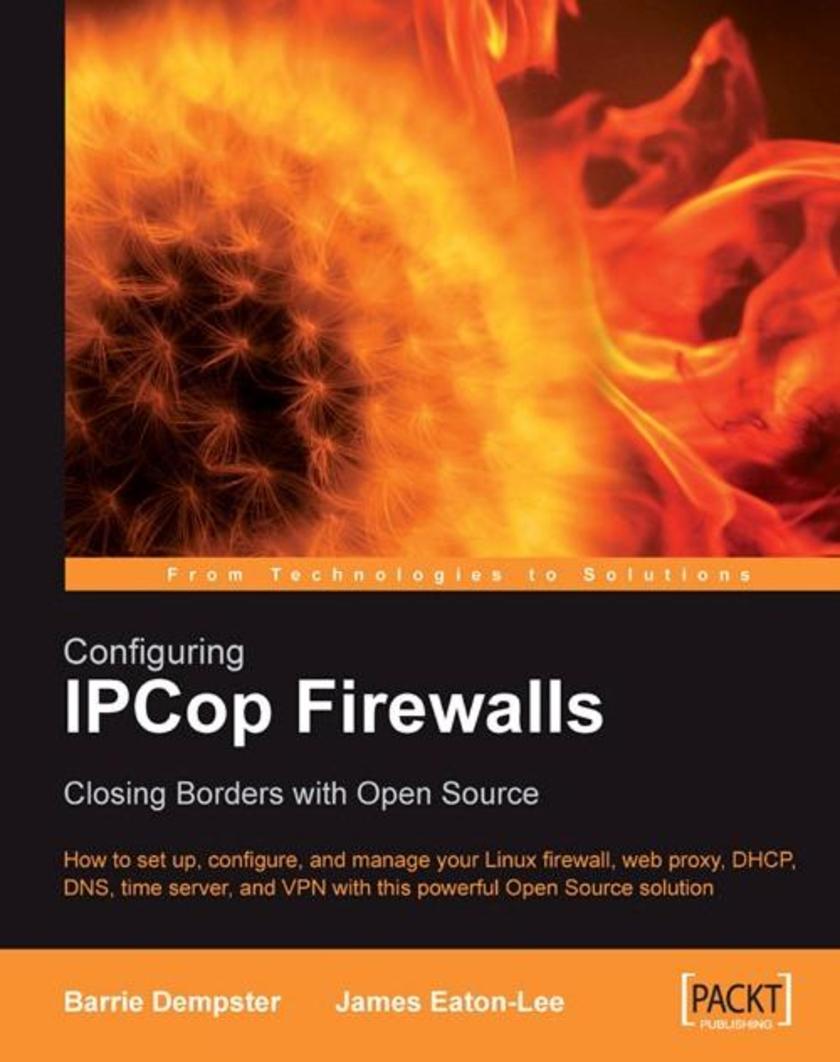
Configuring IPCop Firewalls: Closing Borders with Open Source
¥71.93
Anyone interested in securing their networks with IPCop ” from those new to networking and firewalls, to networking and IT Professionals with previous experience of IPCop. No knowledge of Linux or IPCop is required.
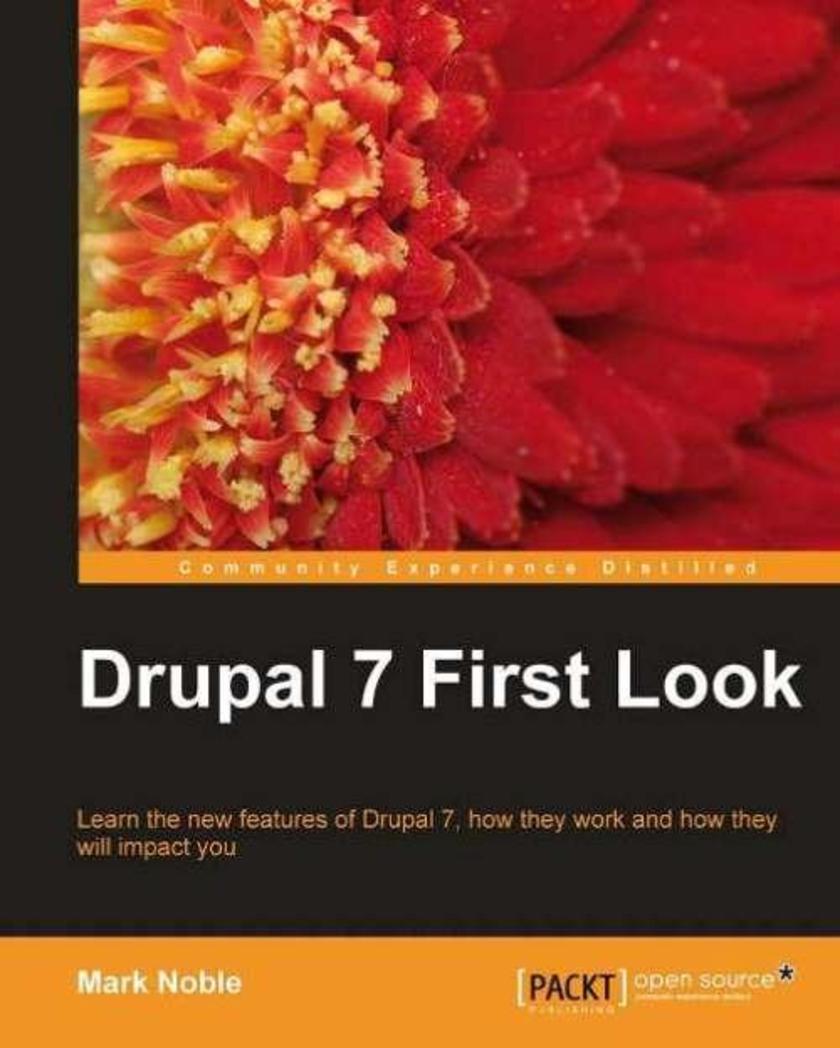
Drupal 7 First Look
¥71.93
This hands-on guide takes a look at the main functional areas of Drupal that have significant new features. It explains these new features and how to use them, drawing attention to significant differences from how things used to behave, and giving the reader an idea of the kind of consequences these changes will bring to them. Drupal 7 First Look is written for site administrators, themers, and developers who have some experience with Drupal 6 (or even Drupal 5) and want to upgrade their sites, themes, or modules to Drupal 7 or just learn more about Drupal 7. No programming experience is required, but several code examples are covered for readers that want more in-depth information about building themes and modules.
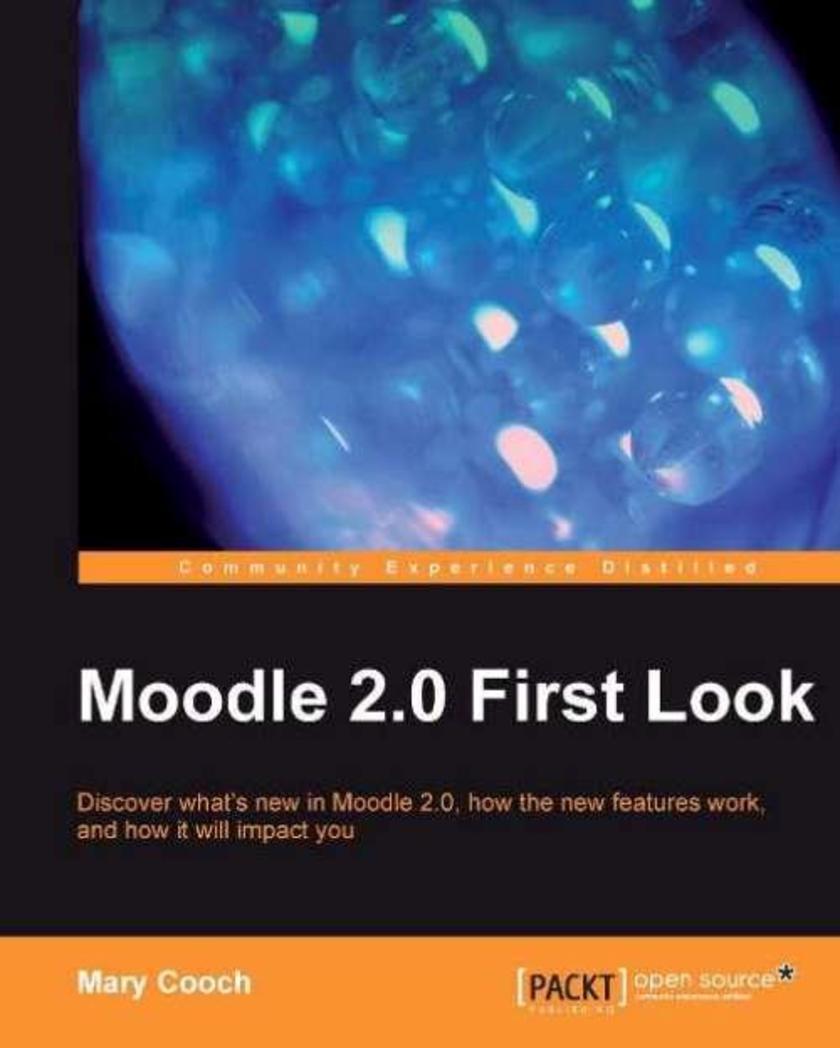
Moodle 2.0 First Look
¥71.93
The book looks at the main functional areas of Moodle that have significant new features, explains the new features and how to use them. It draws attention to significant differences from how things used to behave, and gives the reader an idea of the kind of consequences these changes will bring to them. If you are an existing Moodle user, tutor, or administrator, then this book is for you. You are expected to be familiar with the operation of Moodle.




 购物车
购物车 个人中心
个人中心



